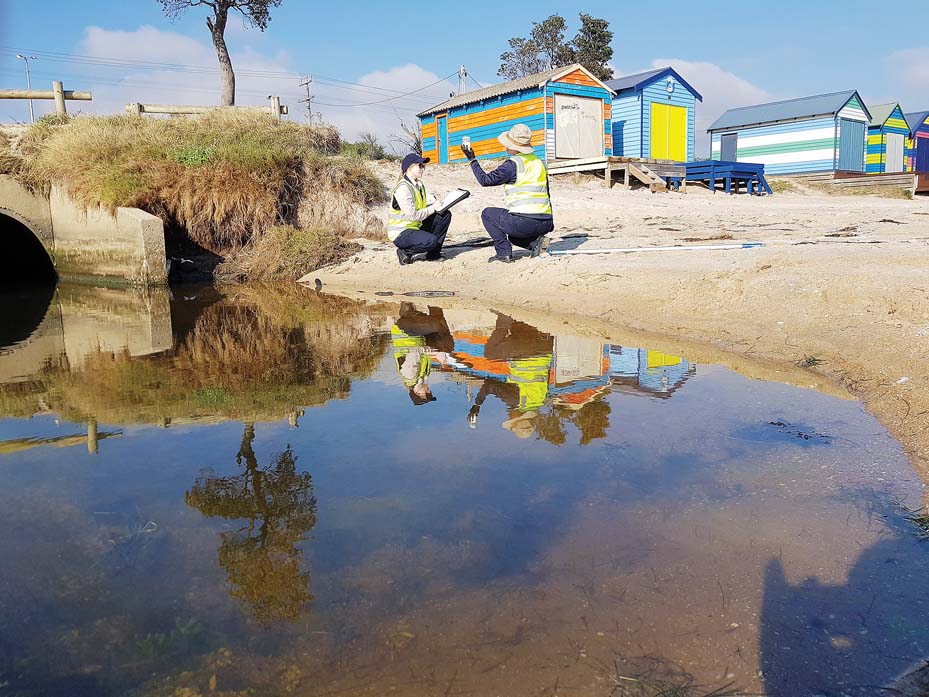
EVIDENCE of a “spilled substance” – most likely diesel fuel – leaking out of a drain at Safety Beach has been traced as far upstream as Rainier Avenue, Dromana, but the source has not been identified at this stage, the EPA said last week.
The oily mess, which has been polluting the sand and seawater for at least the past 12 months, is most noticeable near the intersection of Marine Parade and Point Nepean Road, opposite a service station.
A second leak causes diesel odour to emanate from a smaller drain on the foreshore opposite another service station about one a kilometre away in Dromana.
Safety Beach resident Rob Debernardi sounded the alarm after bathing 20 metres from the nearest bathing box (“Diesel spill taints beach sand, water” The News 15/4/219). This prompted the EPA to send a work crew and arrange for Melbourne Water to set up booms to prevent any surface oil entering the bay. However, heavy rain a week later washed away the booms.
The EPA said plans for a further inspection on Friday 10 May were postponed due to “high volumes of storm water in the drain system”.
EPA crews returned to the drain last week but EPA Southern Metro Region manager Marleen Mathias said identifying the culprit was “not always straight-forward”.
“It is important no one jumps to any conclusions about where it is coming from,” she said.
“The drain system in the area is extensive and the role that groundwater plays could also be important.
“We understand the community’s frustrations and we look forward to their ongoing support in providing information that may help identify the source so [that] appropriate action can be taken. In the meantime, EPA will continue to work with Melbourne Water and council.”
Ms Mathias said reports of hydrocarbon odours emanating from a drain at Dromana were a “separate issue” from those at Safety Beach. She said the EPA was “taking action to resolve matters with a nearby service station”.
Asked how the EPA sets out to find the source of a leak, a spokesperson said one way was to open a drain cover and then go to the next drain cover along the line to “open and sniff inside”.
Another way is to test the flow going through using a special dye, or sending up a machine to detect odours.
Contaminants contained in groundwater moving through the sub-soil can travel large distances before emerging, making identification of the source even more confusing, the spokesperson said.
First published in the Southern Peninsula News – 21 May 2019